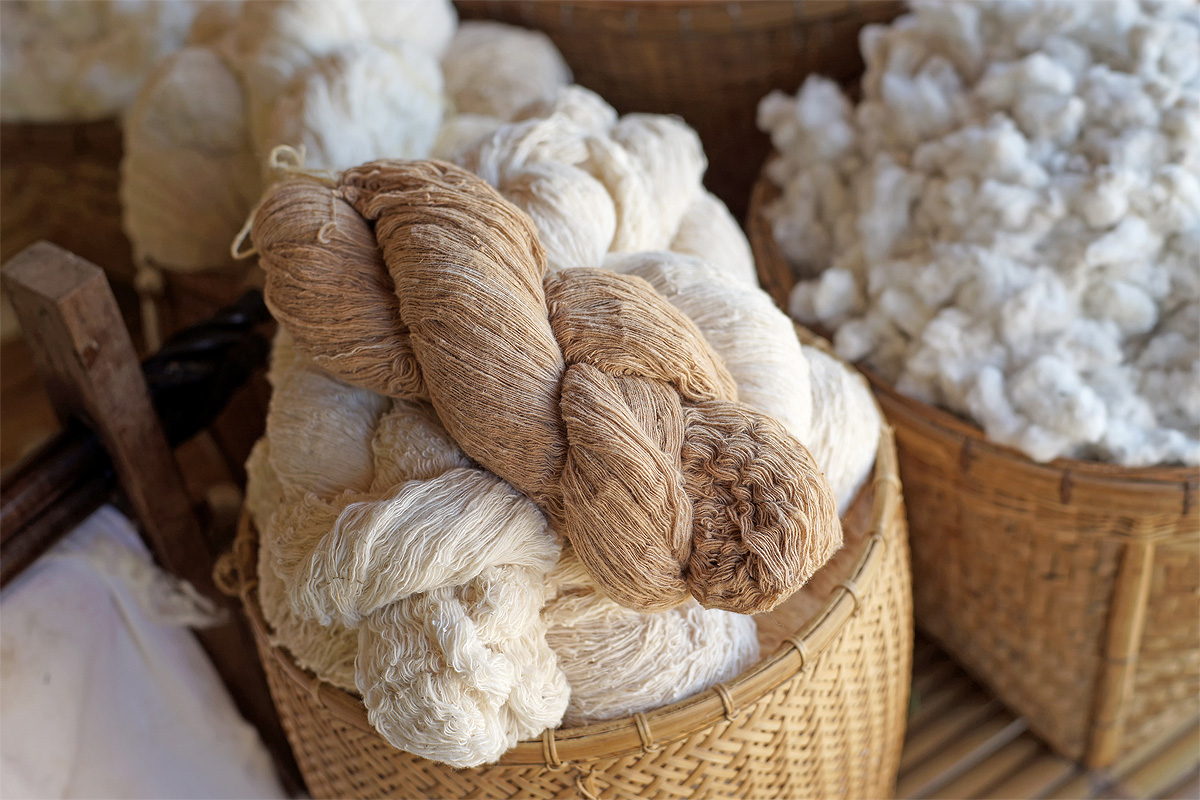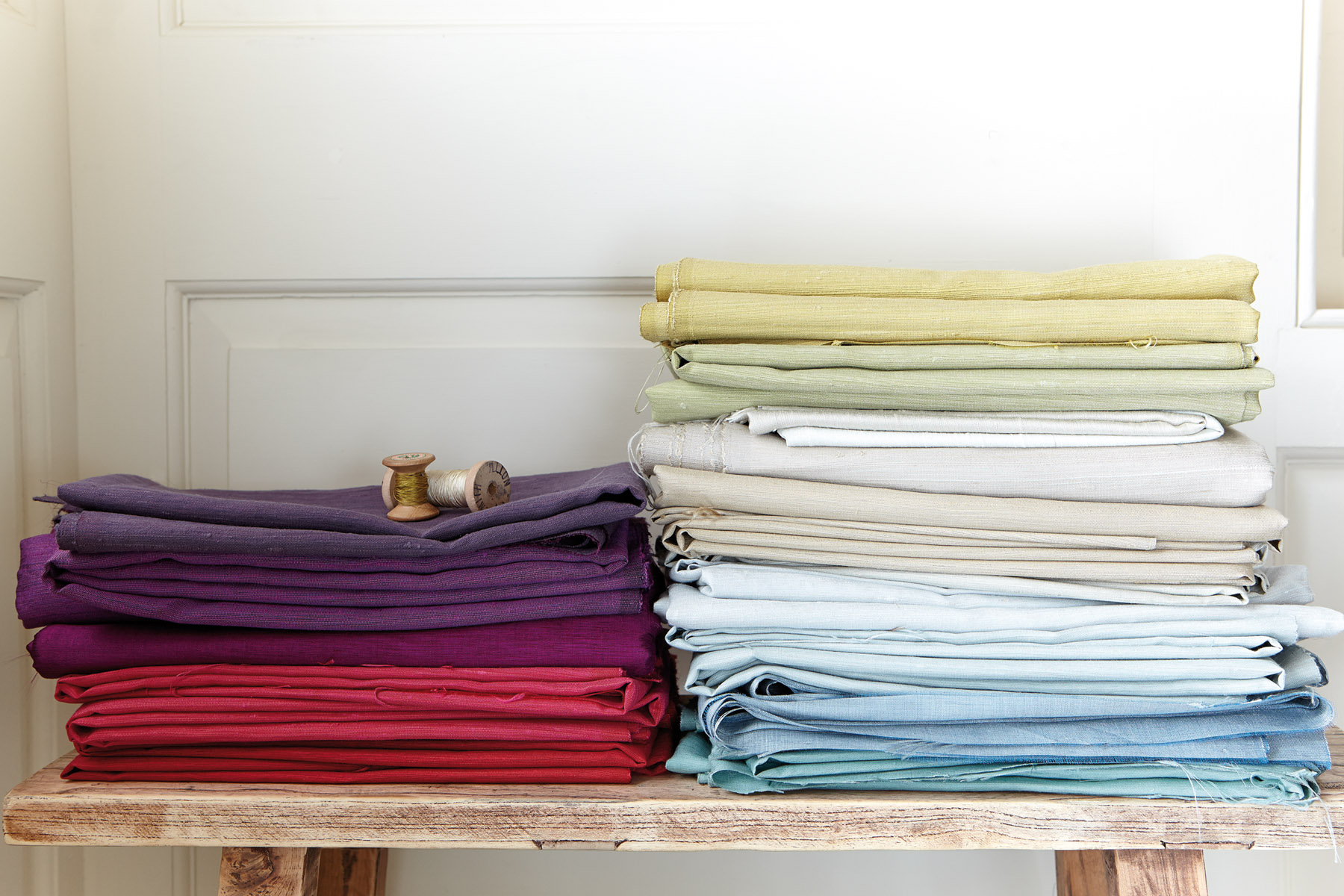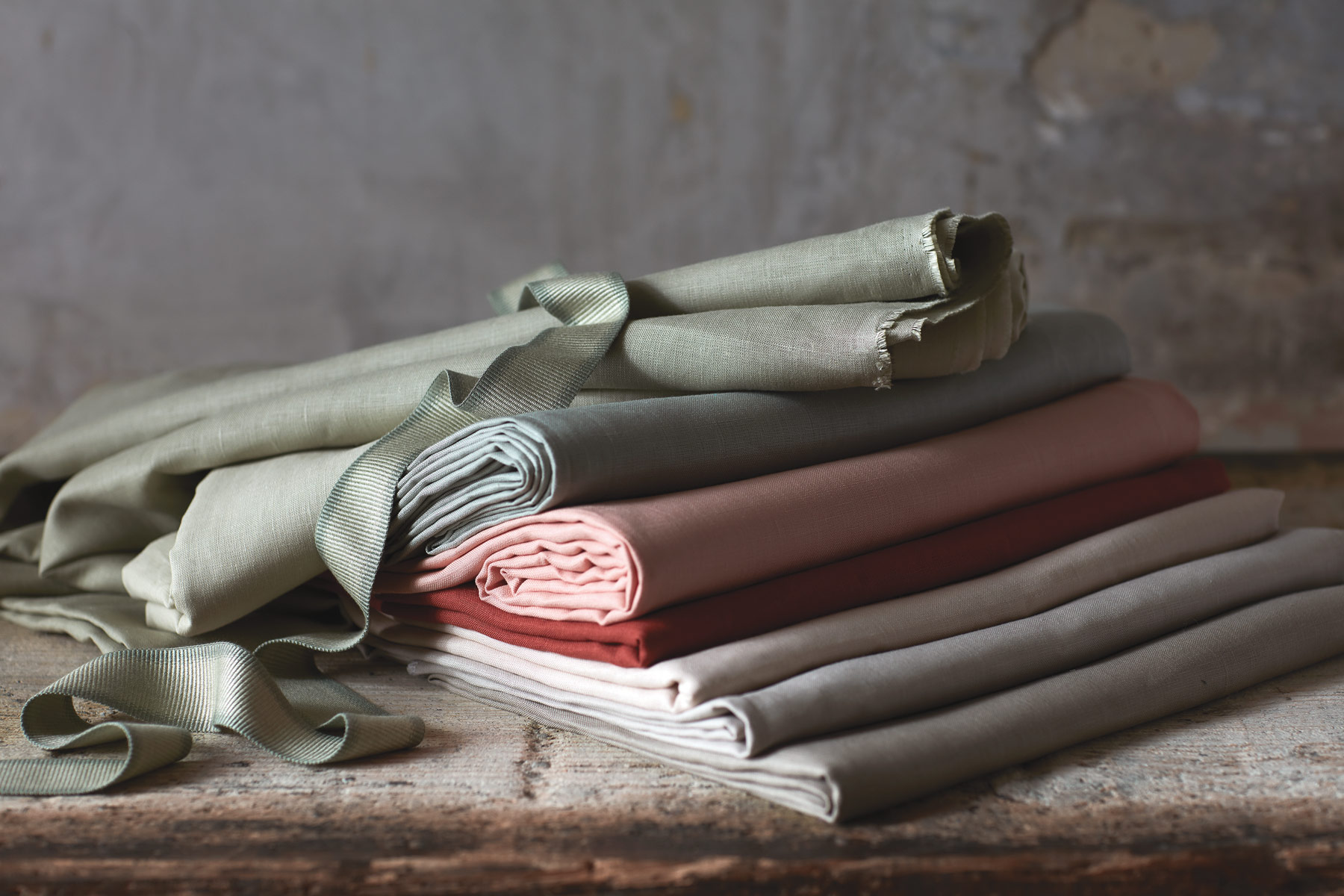Sustainability of Silks and Linens
Silks
Silks and linens are both natural fibres and 100% biodegradable. They will not pollute the environment like other petroleum-based fabrics. They also support their local communities and act as a buffer against poverty.
Silk is a luxurious fabric produced from the cocoons of silk worms. The silk worms are fed on mulberry leaves which are naturally grown. Peace silks, also know as Ahimsa silk, is a peaceful production way of breeding and harvesting silk because no silkworms die in producing silks. It's manufactured under the most stringent social and environmental standard in India.

Silk Process

Vyne Silk

Vienne Silk
The Silkworm breeding takes place under the most natural conditions. The trees where the silkworms grow are not treated with fungicides, insecticides or genetic sprays. The entire tree is covered with a net, similar to a mosquito net, to protect the caterpillars and leaves from other insects or birds.
Once the silkworms have spun the cocoons, they are kept sheltered until the pupae hatch out of the cocoon as a beautiful butterfly. This process can take up to four weeks, which slows down the production but fundamentally produces silk non-violently. Once the butterflies have left their cocoons, the cocoons are processed without the use of harmful chemicals. Vyne Silk, Vienne Silk and Soho Silk are all examples of peace silks.
Matka is essentially an upcycled silk made from the short threads that have broken away from the main filament and are therefore unsuitable for conventional silk production. To make Matka silk, these short threads are spun into yarns with a slightly uneven texture and less of a shine than conventional silk, as they are made up of several broken threads. This results in in a unique fabric with a slightly more matte appearance than conventional silk, although it shimmers very subtly when placed in sunlight. The threads' spun nature means that they are slightly thicker than conventional silk but still very soft, giving it a feel between cotton and cashmere. The James Hare Kashmiri Silk and Simla Silk are produced from Matka yarn.

Kashmiri Silk

Simla Silk

Lismore Linen
Silk is considered a more sustainable fibre. It is a renewable resource, can biodegrade, and uses less water, chemicals and energy than many other fibres. When you are buying silk, you are helping small villages and communities earn a decent living. The silk industry - also known as sericulture - provides employment to rural populations, with around one million workers in China and 7.9 million workers in India. In some parts of India, sericulture has been an important enterprise for developing communities, particularly for women's empowerment and is part of rural poverty alleviation projects.
The international sericulture commission estimates that 60% of sericulture income flows back to farmers, creating a strong money flow from urban to rural areas.
Linens
Linen is one of the most sustainable fabrics known. 100% biodegradable, it is strong, naturally moth resistant and made from flax plant with zero waste.
The beauty of linen is that it can be grown anywhere globally, and its production is so simple. The natural colour of linen can be stunning depending on how natural fibres of flax are treated.
The colour of linen can vary from creamy white or light tan. Linen can also hold dye colours which makes them perfect for many different colours. Made from a flax plant to produce linen, the plant is either cut or pulled from the ground naturally; once the plant is degraded, the entire plant can be used, making the production of linen 0% waste. A common by product of flax is linseed oil.
There are many different environmental benefits of linen. One of them is totally natural material and biodegradable, which means it won't sit in a landfill site, one of the biggest caused of global warming. The farmers that grow flax must stay clear of using pesticides and other bad chemicals to keep it as an organically grown fibre as possible. According to the European Confederation of Linen and Hemp "Across its lifecycle, a linen shirt uses 6.4 litres of water" compared to 2,700 litres of water for a cotton shirt. Explore Lismore Linen













 Menu
Menu
 Back to All News
Back to All News





